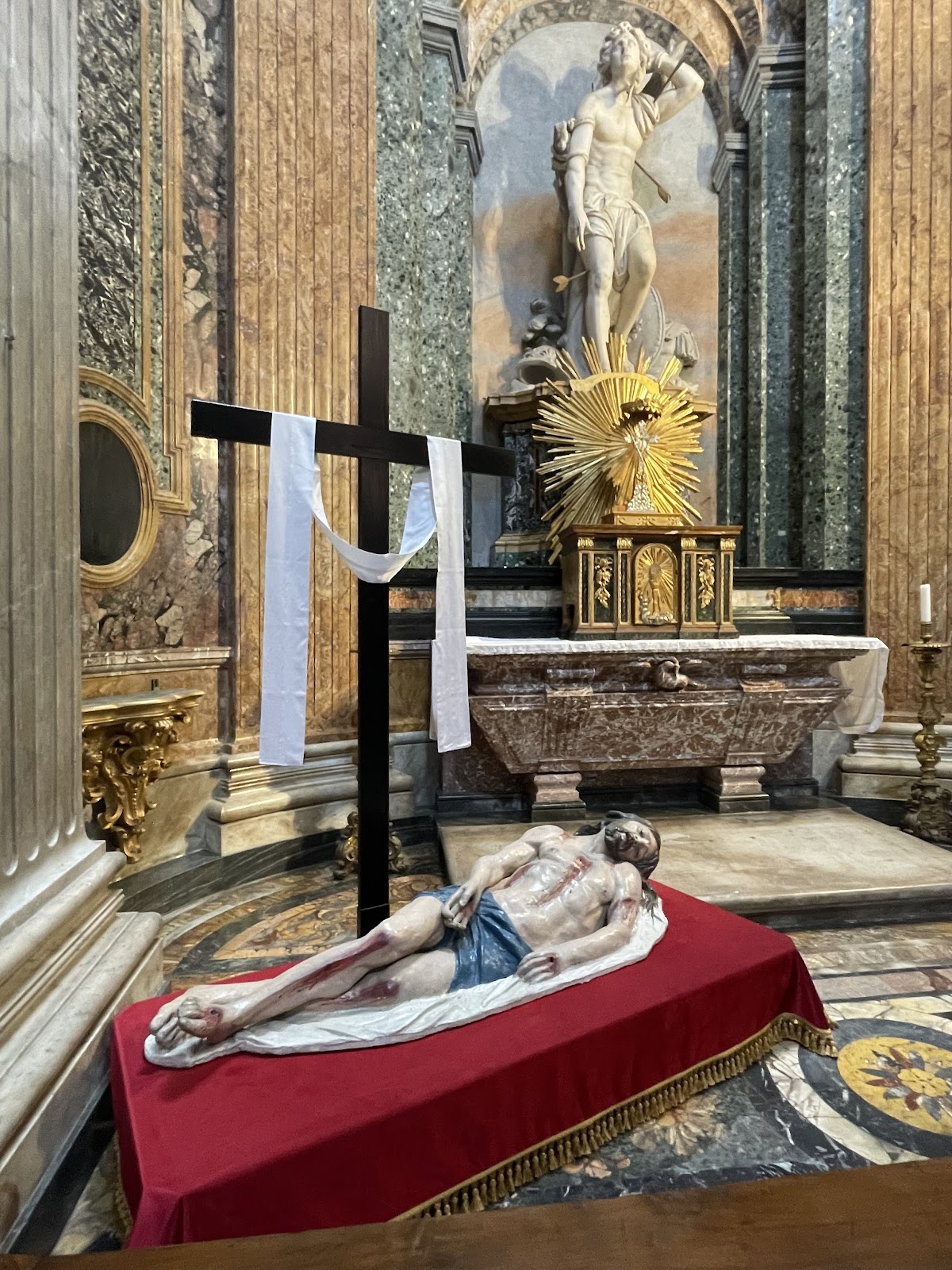In the Church of St. Agnes is a gay icon; do they know?
Just inside the main doors on the altar to the left is a statue of St. Sebastian. Posed with a hand behind his head and the other on his thigh, the sculpture accentuates his youthful buff-good-looks but also emphasizes the arrows which pierce his taut body. His facial expression seems slightly odd however. With eyes looking upward to the sky questioningly his slightly open mouth seems to be saying: "who, me?"
Perhaps that is the nature of martyrdom: "who, me?"
St. Sebastian is a gay icon. Dating back to at least the 19th century his image has taken on a cult like status within the gay community. The homoerotic quality of the composition coupled with his tortured predicament has resonated deeply within gay culture and identity: https://www.liverpoolmuseums.org.uk/stories/lgbt-artwork-marks-saint-sebastian-feast-day
On the same altar and just to the left of St. Sebastian's sculpture is the figure of the broken body of Jesus, surmounted by the cross draped with white cloth (representing his resurrection?). His body echoes the masculinity of St. Sebastian, with muscles this time pierced by cuts representing his brutal treatment and crucifixion. The facial expression of Jesus appears to be one of peace.
Both sculptures' meanings ricochet off each other, and their close proximity implies an intentionality. These works were place together because of an intertwined meaning or shared purpose.
Being Jewish I would never feel comfortable trying to expound on the Christian meaning or interplay of both, but being gay I would like to give it a go and suggest there is queer subtext happening here. I situate this queer subtext in an issue I raised during Prof. Hollander's lecture on Interreligious Dialogue, specifically when 'the Other' returns the gaze and begins asking questions of those seeking dialogue.
As 'secular Jewish gay other', I read this composition in a different way than many of the Christian faithful, but a reading I feel warrants investigation. I respectfully suggest the interplay of St. Sebastian and Jesus points to contemporary notions of bodily autonomy, where we are all freely empowered to make decisions about our own body.
So just as Jesus made a decision which the Christian tradition teaches leads to salvation, so too (in the form of a homoerotic St. Sebastian gay icon) do I claim the same right of ownership of my body and right to make choices for myself. In terms of dialogue this could raise interesting opportunities to talk about common suffering and shared stories of survival. It could provide a foundation of trust where deep bonds of friendship could be formed.

Comments
Post a Comment